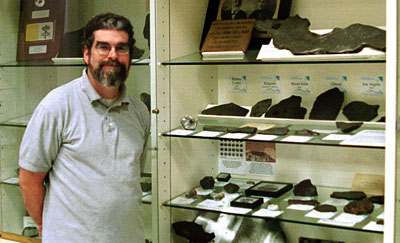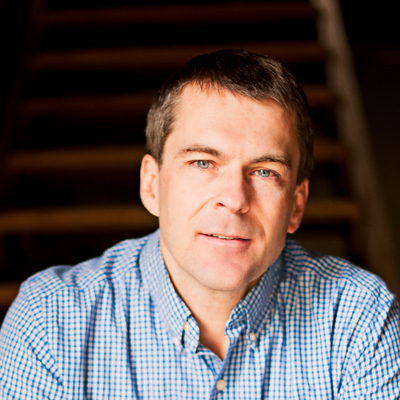
The following article recently appeared in Sightings, a publication of the Martin Marty Center for the Advanced Study of Religion.
Last week, the Niels Stensen Foundation, a Jesuit study center in Florence, Italy, convened a conference entitled “The Galileo Affair” to show how recent research “might alleviate the ‘tension and conflict’ still clouding the relationship between the Church and science.” Indeed, four hundred years after the Florentine astronomer’s extraordinary discoveries, we are still assaulted with the message that science and religion are at war. Try telling that, however, to Brother Guy Consolmagno.
Consolmagno is a Jesuit astronomer employed by the Vatican Observatory, where he serves as the curator of an extensive meteorite collection-several specimens of which he has discovered himself. The Vatican began employing astronomers in the nineteenth century, Consolmagno says, “to show the world that the Catholic Church supports science.”
Of course, Vatican support for science is partly public relations. According to the conventional wisdom still taught in schools and repeated by many public intellectuals, Galileo bravely spoke truth (science) to power (the Church), and paid dearly for it, spending his dying days in prison. Except that it’s not true. Ronald L. Numbers’ Galileo Goes to Jail: And Other Myths About Science and Religion, just out from Harvard University Press, is only the most recent attempt to set the historical record straight on “myths”, including its Number Eight: That Galileo Was Imprisoned and Tortured for Advocating Copernicanism. Apparently Carl Sagan’s quip that Galileo was “in a Catholic dungeon threatened with torture” has all the academic rigor of the Indigo Girls song that begins “Galileo’s head was on the block.”
Consider: Galileo’s Dialogue Concerning the Two Chief World Systems, the source of controversy, previously had been read and approved by the Church’s censors; and Pope Urban VIII, who presided over the trial, was Galileo’s friend and admirer. Consider also: prior to the trial, Galileo stayed in the Tuscan embassy; during the trial, he was put up in a six-room apartment, complete with servant; following the trial, his “house arrest” consisted of being entertained at the palaces of the grand duke of Tuscany and the Archbishop of Siena. Galileo, apparently, was no ordinary heretic.
According to an article by historian David Marshall Miller published last year in the journal History of Science, recent studies of the Galileo Affair have “exploded this ‘myth’ that Galileo’s condemnation was a conflict between science and faith, novelty and authority, or rationality and irrationality.” The Affair, Miller says, was actually occasioned by the Thirty Years War. Indeed, Galileo’s troubles began somewhat suddenly in 1633–just after the Holy Roman Empire suffered setbacks in the war. To make a long story very short: Pope Urban VIII, who had been elected with support of French Cardinals, was suspected and accused of sympathizing with France, which opposed the Empire in the war. In essence, Spaniards and others were wondering, “Is the Pope Catholic?” The apparent contradiction between Galileo’s widely publicized imprisonment and his actual treatment suggests that his trial and “house arrest” were largely symbolic gestures–the Pope’s concession to his political critics, and a way for him to demonstrate his Catholic credentials.
History, like science, teaches us that appearances can be deceiving. Indeed, what appear to be conflicts between science and religion are almost always conflicts over political power and cultural authority. The sin of the Church in the Galileo Affair was not opposing science or free inquiry, but using Galileo as a pawn in what was primarily a political tussle. Perhaps the Stensen Foundation conference will finally put the myth of warfare between science and religion where it belongs–buried alongside the idea that the sun revolves around the earth. Unfortunately, that is not likely. Because the promulgators of the warfare metaphor seem less interested in evidence than in using history for their political and ideological purposes, I suspect the myth of conflict we will have with us always.
In the meantime, Consolmagno delights in doing science. “The amazing thing about meteorites,” he says, “is that you don’t have to go to outer space in order to experience them. Outer space has come to us!” Consolmagno is only one among many people who believe-without conflict–that what is true of meteorites is also true of God himself. In any case, Consolmagno, no less than Galileo, is living proof that “Catholic Astronomer” is not an oxymoron.


